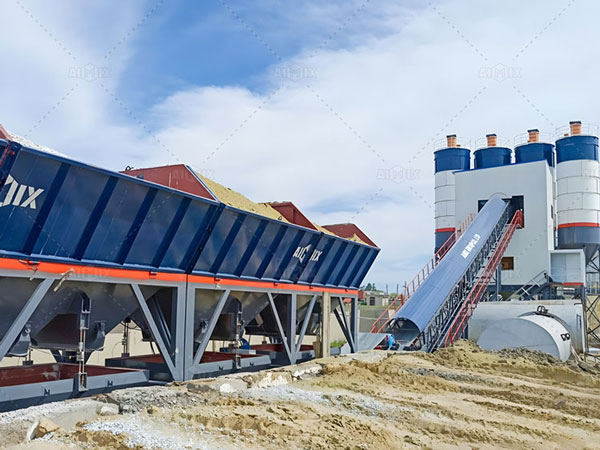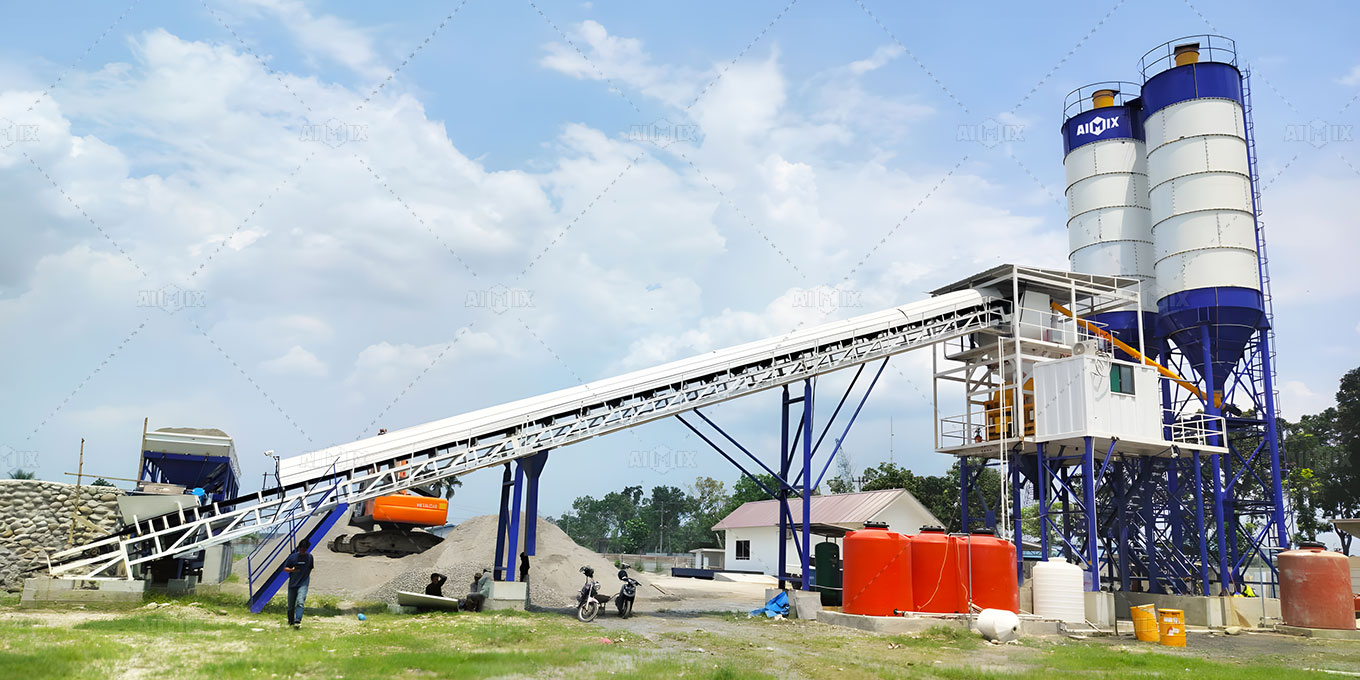The demand for off-grid concrete batch plants has increased significantly as infrastructure projects extend into remote and inaccessible regions. Traditional concrete production facilities depend on stable electricity grids and logistical support, which are often unavailable in isolated locations. In such circumstances, self-sustaining concrete batching plant for sale provides a practical solution, allowing contractors to operate efficiently despite harsh environmental and geographical constraints.
Off-grid concrete batch plants are specifically engineered to function independently, incorporating advanced power generation systems, modular designs, and material storage solutions. These features ensure continuous concrete production without external utilities, reducing reliance on transportation while improving project timelines. Below, we examine the key characteristics of these plants and their benefits for construction operations in remote locations.
Unlike conventional batch plants, off-grid solutions integrate independent power sources such as diesel generators, solar arrays, and hybrid energy systems. These configurations provide uninterrupted electricity, ensuring consistent mixing, weighing, and material handling operations. In some advanced models, intelligent energy management systems regulate consumption, optimizing fuel efficiency and reducing operational costs.

Many off-grid batch plants feature modular structures, allowing for rapid deployment and relocation. These plants are designed for easy assembly and disassembly, minimizing downtime when moving between job sites. Mobile concrete batching plant for sale, equipped with trailer-mounted systems, enhances adaptability for temporary or short-term projects in hard-to-reach areas.
Water scarcity in remote regions necessitates efficient storage and recycling mechanisms. Off-grid plants incorporate advanced water reclamation systems that reduce wastage and improve sustainability. Additionally, high-capacity material silos ensure an uninterrupted supply of aggregates and cement, mitigating delays caused by long-distance supply chains.
Off-grid concrete plants eliminate dependency on municipal power and water supplies, allowing construction firms to operate in locations where traditional batch plants would be unfeasible. This autonomy translates into greater project flexibility and efficiency.
By reducing reliance on external logistics, off-grid plants significantly cut transportation costs and associated delays. On-site concrete production streamlines workflows, improving overall productivity and ensuring timely project completion.

Many off-grid concrete batch plants incorporate eco-friendly technologies such as solar power integration and wastewater recycling. These sustainable features minimize environmental impact while maintaining high production standards.
Selecting an off-grid plant involves evaluating its production capacity and suitability for specific project needs. Small concrete plants cater to low-volume applications, while high-output models accommodate large-scale construction demands.
Many manufacturers offer customization options, including automated control systems, weather-resistant enclosures, and enhanced mobility. Assessing these features ensures that the selected plant aligns with operational requirements.
While off-grid plants may have higher initial costs, their long-term benefits—such as reduced transportation expenses, lower energy consumption, and increased project efficiency—make them a worthwhile investment. Contractors must weigh these factors when making purchasing decisions.
Off-grid concrete batch plants provide a strategic advantage for construction projects in remote areas. Their autonomous operation, modular design, and sustainability features make them indispensable for modern infrastructure development. As construction ventures continue expanding into challenging terrains, off-grid batching solutions will play a crucial role in ensuring seamless and cost-effective concrete production.